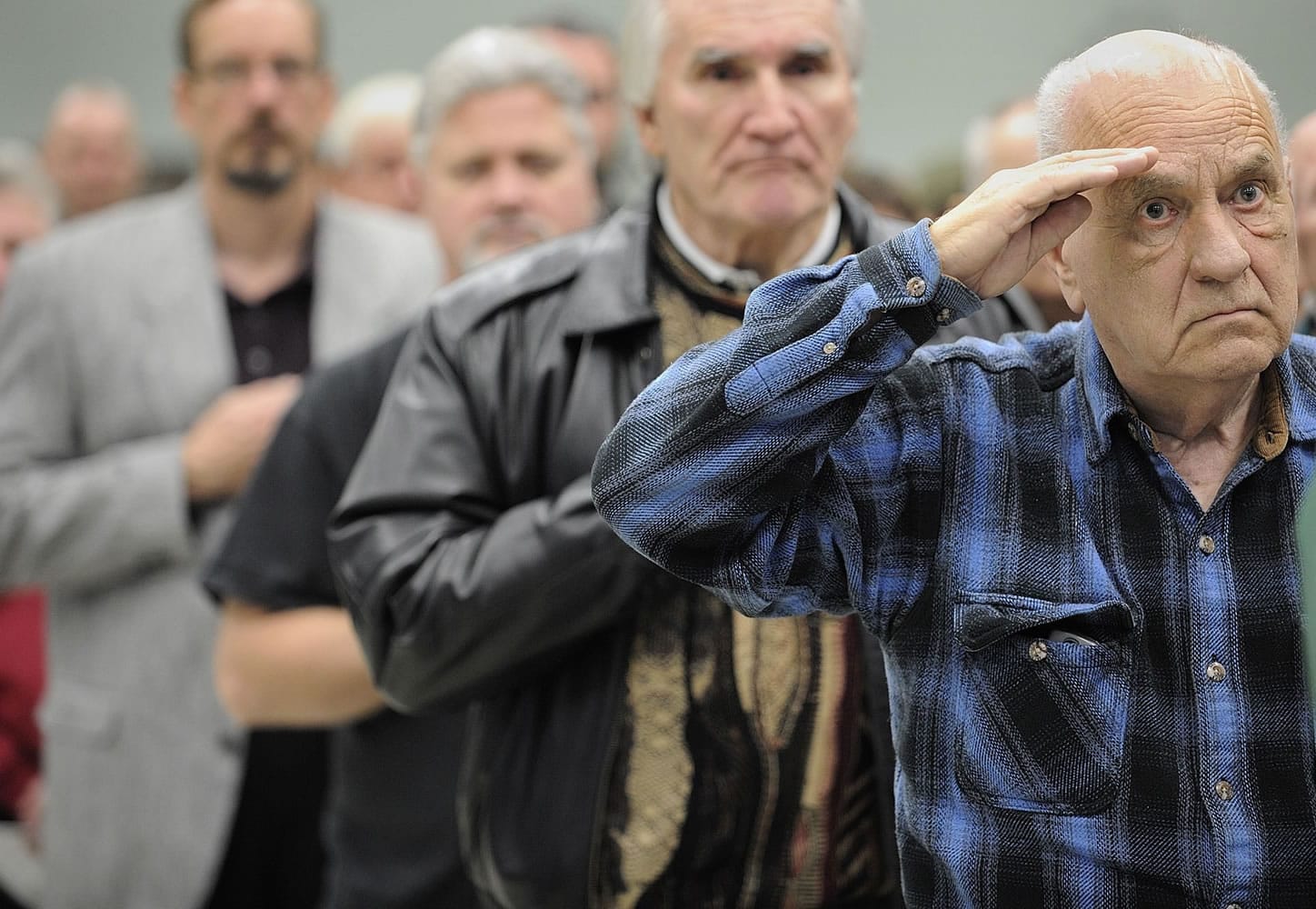Vancouver’s 21st-century soldiers now have a home to match.
About 400 military personnel and community members came together Friday to celebrate the ribbon-cutting for the Armed Forces Reserve Center.
About 850 members of the Army Reserve and the Washington National Guard have been based at the 18½-acre campus for about two months, after military operations ended at Vancouver Barracks in mid-September.
As far as the Veterans Day ceremony goes, “There is no more fitting day for a ribbon-cutting,” said Col. Mark Snyder, senior tenant of the reserve center.
The facility at 15005 N.E. 65th St. includes about 100,000 square feet of floor space in three buildings. While construction of the $30 million project took about a year, the concept of a new military center had been under discussion for a couple of decades.
Col. Dan Kern, a Camas resident who represented the commanding general of the Washington National Guard at Friday’s event, said he was part of the original planning committee.
“The conversation started 22 years ago,” said Kern. The panel looked at Camp Bonneville, the site of a former Army firing range and now the focus of an expensive cleanup project.
“We looked at sites around Vancouver, working with the city and the National Park Service, looking at things like freeway access,” said Kern.
Kern holds one of the top leadership positions in the Washington National Guard as director of joint operations, working with the governor during emergencies in the state.
In that capacity, Kern can appreciate the domestic-response capabilities of the reserve center.
“It will be used as a response location for disasters — natural as well as man-made,” Kern said.
The 790th Chemical Co. can provide decontamination service for people in Washington, Oregon, Idaho and Alaska. The 396th Combat Support Hospital can set up a 248-bed medical center.
Seven Army generals attended the ceremony, including the last one to command Vancouver Barracks. Brig. Gen. Daniel York led the Army Reserve’s 104th Division Headquarters out of Vancouver Barracks in 2010 to its new home at Joint Base Lewis-McChord, near Tacoma.
“I wish we’d have been here,” said York, who now is assigned to Fort McCoy in Wisconsin.
Vancouver Barracks was awesome from a historical standpoint, York said, but it was a sprawling campus.
And an old one, noted Lt. Col. David Burkhardt.
“The old buildings were not constructed for today’s information technology,” Burkhardt said.
Or, as it turned out, for even more basic technology. “In the winter, sometimes the heat worked, and sometimes it didn’t.”
Vancouver Barracks was closed down as part of the federal Base Realignment and Closure process.
But one thing hasn’t changed since the Army arrived in the region 162 years ago, and that’s the mission. Vancouver still is a place where soldiers prepare to head for less-peaceful surroundings, Mayor Tim Leavitt noted during his turn at the microphone.
While Col. Snyder has been overseeing the move-in, he’s had other things on his timetable. He’s also scheduled for a nine-month deployment in Afghanistan, Leavitt said, where Snyder will help train the Afghan army.





